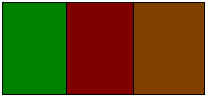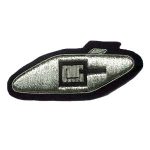
The 1914 – 1918 War
The 2nd Royal Tank Regiment is descended from ‘B’ Company Heavy Section Machine Gun Corps and was originally formed at Bisley Camp, Surrey, in May 1916. The company, which comprised 250 all ranks, moved to Thetford in September and began extensive tank training under the command of Major T R M McLellan, Cameronians.
On 18th November 1916, the Company was renamed ‘B’ Battalion, Heavy Branch machine gun corps and moved to France. The Battalion was located at Pierremont whilst its headquarters was at Wavrans.
Throughout the winter, crew training was carried out within companies and officers instructed their own sections in map reading and sketching, visual training, revolver and pigeon handling. Following this intensive training, the Battalion received its first Mark IV tanks on 18th May 1917 and at 3.30 am on 7 June 1917, went into action for the first time, attacking ground east of the Nessines-Wytschaete Ridge. Shortly after this engagement, the HBMGC was renamed the Tank Corps.
On 20 November 1917, ‘B’ Battalion, Tank corps, took part in the battle at Cambrai; it had a frontage of approximately 2000 yards in the centre of the attack with its right flank based on Gauzecourt. The battle continued for 3 days and the fighting was centred on the towns of Cantaing, Noyelles and Fontaine. During the remainder of the war, the Battalion was involved in seventeen separate actions of which eleven were operations on a large scale.
Between the wars
Early in 1919, the Battalion returned home to Bovington Camp and was reduced to Cadre strength but in October it was reformed under the command of Lieutenant Colonel A Courage DSO MC. In April 1921, it moved to Pinehurst Barracks, Farnborough, where it remained until just before the outbreak of the 2nd World War. During the 1930’s the 2nd Battalion, Royal Tank Corps, as it was now named, spent much of its time on exercises on Salisbury Plain or on the training areas near Aldershot and Farnborough. The Battalion was part of the 1st Tank Brigade which was reformed on 1 April 1934 and commanded by Brigadier P C S Hobart a former commanding officer of the Battalion. The Regiment’s distinctive Squadron names of “Nero”, “Ajax”, “Badger”, and “Cyclops” are derived from their radio call signs whilst in the Brigade. After 18 years based at Farnborough, the Second moved to Lulworth and shortly afterwards was stationed in Warminster until May 1940.

The TRF as worn by the Royal Tank Regiment
The 1939 – 1945 War
On 23 May 1940, the Regiment landed at Cherbourg and moved up to the line of the Somme, which was at that time the limit of the German advance. The first task given to the Regiment, which was equipped with Mark VIBs, A9s and A13s, was that of co-operating with the French Army in a counter-attack on Abbeville. In the ensuing engagement, ‘A’ Squadron lost all but two of its tanks. Following this, the Regiment took part in a number of small defensive actions but, although one or two local successes were gained, the German weight of armour was such that the Anglo-French force was quickly pushed back. A composite squadron was formed by the 2nd and 5th Royal Tank Regiments and covered the 400 mile withdrawal to Cherbourg, while the main body of the Second left Brest by ship for England on 16 June 1940.
The Regiment was re-equipped with A13s and sailed for the Middle East in August when, on arrival in Egypt, it formed part of the 4th Armoured Brigade. The Regiment’s first action in the Western Desert was at Hileigat and this was followed by the Battle of Sidi Barani and the capture of Bardia and Tobruk. The Regiment then took part in the attempt to cut off the Italian Forces withdrawing from Benghazi and after the battle of Beda Fomm 20,000 Italians were marched off to POW Camps.
Shortly after the entry of Japan into the war, the 7th Armoured Brigade was sent to assist the defence of Singapore, and in January 1942 the Regiment having been re-equipped with Stuart tanks embarked from Suez. The Second arrived in Rangoon on 21 February and, within 28 hours of arrival, one of the squadrons was in action 70 miles away from the city. The whole Burma campaign, in which the Regiment bore a large proportion of the fighting, was a successful rear guard action and withdrawal. On 19 April 1942 the Second came under the command of the Chinese Army for a few days and during the defence of Magwee Oilfields had several engagements. After 3 months continuous fighting the Regiment reached Kalewa on the river Chindwin with about 35 of its 50 tanks. As the tanks could not be ferried across, they had to be destroyed and the crews had then to march on foot over the mountains to Tamu. The Regiment then moved to Dhond where it was reinforced and re-equipped with Grant tanks.
In September 1942, the Second moved to Iraq and in May 1943 to Syria where it was re-equipped with Sherman tanks. Six months later the Regiment was again moved to Egypt and eventually embarked for Italy in April 1944 to come under command of the 5th Corps on the Adriatic Coast. With one brief interval, the Second remained in the forward area throughout the remainder of the summer and throughout the winter. In the last battle of the Italian Campaign in April 1945, the Second formed part of an exploiting force with 43 Ghurka Brigade and led the advance to Medicina and the River Reno. At the end of the war the Regiment was deployed north of the River Po and ‘A’ Squadron entered Austria on the night of VE Day.

As worn on ceremonial and mess dress on the right arm.
Post 1945
On 20 December 1945, the Regiment moved to Palmanova where it was re-equipped with Churchill ‘Crocodile’ tanks. Nine months later, the Second moved yet again to Luneburg, North Germany to rejoin the 4th Armoured Brigade. Occupation duties for the Regiment lasted until the spring of 1948 when the Second returned to England after an absence of eight years during which it had seen active service in three continents. The Regiment remained in England for the next four years and was stationed in Aldershot and Tidworth.
On 15 February 1952, the Second moved to Swinton Barracks, Munster, West Germany, and was re-equipped with Centurion tanks. The Regiment remained in Munster until August 1959 when it sailed to Homs in Libya to become an Armoured Car Regiment equipped with Saladin, Saracen and Ferret armoured cars. In October 1961, the Second moved to Benghazi and converted to the airportable role and moved to Tidworth as part of the Strategic Reserve to become the forerunner of the Parachute Squadron, Royal Armoured Corps.
In 1964, the Regiment moved to Perham Down and here spent its first Christmas in England for 14 years. Ajax was detached in Cyprus on a six months tour with the United Nations Force and was the first detachment of the Regiment as a whole to wear the light blue beret. In November 1965, the Regiment moved to Hohne, West Germany, to join the 7th Armoured Brigade and where, in 1967, it re-equipped with Chieftains. Three years later, in August 1970, the Second left BAOR for a 2 year tour of duty as the RAC Centre Regiment before returning to Germany and being stationed again in Munster in 1972. During this tour the Regiment provided Armoured Car Squadrons on 4 month emergency tours in Northern Ireland – Badger in 1973 and Ajax in 1974. In 1975 the Regiment, less Badger, spent 4 months in Armagh operating in the infantry role.
In 1977 the Regiment converted to the Armoured Reconnaissance role as a type B Regiment. Ajax and Badger becoming Medium Reconnaissance Squadrons equipped with Scorpions and Scimitars; Cyclops becoming a Close Reconnaissance Squadron equipped for Fox. Hunstman was disbanded on change of role. In late 1977 the Regiment, less Cyclops, returned to Northern Ireland on a 4 month emergency tour. Ajax was deployed to the city of Londonderry in the infantry role; Badger and a Tac HQ were deployed to Magherafelt in South Londonderry in a rural role. In 1978 the Regiment returned to Munster and resumed its role as an Armoured Reconnaissance Regiment.
In May 1979, the Regiment returned to Northern Ireland in an Infantry role. It was based in Omagh for 18 months. As one of the resident Regiments in the Province they were primarily involved in patrolling the border area South West of Dungannon. However, at various stages of their tour, elements of the Regiment could be found throughout the six counties.
The Second returned to Germany in late 1980 and was based in Wolfenbüttel, close to the Inner German Border. They were equipped with CVR(T) in the role of Corps Reconnaissance and were constantly involved throughout the training season on exercises.
In early 1984 the Regiment moved to Fallingbostel and converted to Challenger I, the first Challengers arriving in early 1985. They were based in Wessex Barracks. The move to Fallingbostel saw the Second exercising in Canada and major FTXs in Germany.
Having spent six years in Germany the Regiment moved to Catterick in 1990 in the role of the RAC Training Regiment. The task of training RAC recruits was both demanding and formidable and one which tested the Regiment to the full, particularly the JNCOs.
In 1992 the Regiment returned to Germany and moved into Lumsden Barracks in Fallingbostel. They were amalgamated with 3 RTR in 1992. The new Regiment has been on emergency/operational tours in Northern Ireland, Bosnia, Kosovo and conducted exercises in Canada, Poland, Southern Germany, in addition to maintaining a permanent presence in Northern Germany.
The regiment deployed as part of 7 Armoured Brigade during the recent Opereration Telic (2003), with a squadron (Cyclops?) returning to Iraq in 2005. 2 RTR left Fallingbostel, their home for many years in August 2007. Departing for Tidworth as part of 1 Mechanised Brigade, 1st Bn Royal Regiment of Fusiliers took their place at Lumsden barracks arriving from Celle.
2 RTR recruits from Somerset, Cornwall, Devon, Dorset and SE England. They have had soldiers in N. Ireland, Canada and all British Army operational zones.
Rugby and skiing are the strongest sports in the regiment – it has held the RAC trophy in both these events.
© 2005 The Royal Tank Regiment
